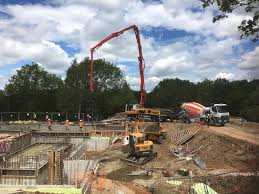
Groundworks make up the foundation of any construction venture, becoming the crucial 1st step to guarantee balance, basic safety, and durability. In London, a city noted by its unique past and varied design, groundworks play an particularly important part due to distinctive problems caused from its urban panorama. Here’s all you should understand about London groundworks.
1. Ancient Value:
London’s groundworks go as far back generations, using its infrastructure evolving after a while to fit the city’s expanding populace and transforming demands. From historic Roman foundations to modern-day time architectural marvels, the city’s groundworks reflect a rich tapestry of design variations and construction techniques.
2. Geotechnical Factors:
London’s geology offers distinct obstacles for groundworks. The metropolis is located atop layers of clay, gravel, and sand, with the presence of waterlogged places including difficulty to building projects. Designers must carefully evaluate garden soil problems and groundwater amounts to minimize risks such as subsidence and basis instability.
3. Regulatory Agreement:
Moving the regulatory panorama is crucial for productive groundworks in London. Construction projects must abide by rigid constructing requirements, planning rules, and enviromentally friendly standards established by community respective authorities. Concurrence makes certain the safety of residents and minimizes the impact on the surrounding environment.
4. Technological Improvements:
Breakthroughs in modern technology have revolutionized London’s groundworks market. From express-of-the-art work surveying instruments to superior supplies and construction techniques, designers have accessibility to a wide range of resources to streamline the groundworks procedure. Digital modeling and simulator methods allow exact organizing and execution, reducing costs and maximizing performance.
5. Ecological Sustainability:
In a age of increasing enviromentally friendly understanding, sustainable practices are integral to London’s groundworks assignments. Integrating natural facilities, such as rainwater home gardens and permeable pavements, will help handle stormwater runoff and lower the city temperature island effect. Additionally, recycling resources and decreasing waste materials play a role in a more eco-pleasant development approach.
6. Downtown Obstacles:
London’s densely inhabited downtown surroundings offers unique difficulties for groundworks. Only a little space, overloaded streets, and below the ground utilities need careful preparing and coordination to avoid interruptions to daily living. Cooperation among stakeholders, such as builders, contractors, and native areas, is important to navigate these complexities successfully.
7. Upcoming Prospects:
As London is growing and develop, the requirement for revolutionary groundworks solutions will undoubtedly raise. From facilities updates to new development tasks, the city’s active scenery gives adequate opportunities for market experts to showcase their expertise. Adopting emerging technology and eco friendly methods will be key to shaping the future of groundworks in London.
In summary, groundworks contractors embody a harmonious blend of custom and innovation, exhibiting the city’s abundant history and forward-considering ethos. By comprehending the ancient value, geotechnical factors, regulatory scenery, engineering inventions, environment sustainability, metropolitan difficulties, and upcoming leads, stakeholders can get around the intricacies of groundworks with certainty and foresight.


